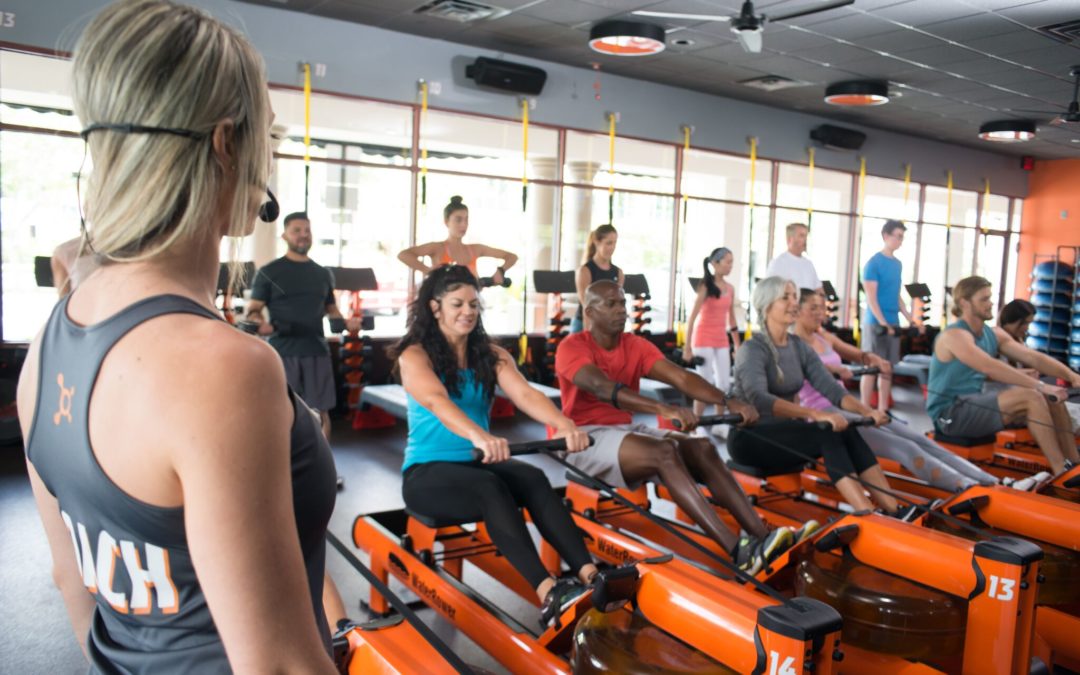By: Michael Piermarini Chief Product Officer Orangetheory Fitness
Whether you’re training for your next race, progressing through a weight loss journey, focused on staying healthy, or looking to improve overall performance, cross-training should be a regular part of your workout schedule.
Simply defined, cross-training is training in sports outside of an athlete’s usual sport. Let’s not forget, we’re all athletes in our own right, all it takes is a mere shift of perspective, but we digress.
While there is something to be said for runners training by running, swimmers training by swimming, and cyclists training by cycling, research supports the physical and mental performance benefits of diversifying workouts and varying stimuli (i.e. runners training by running, swimming and cycling…and swimmers by running and cycling…and cyclists by swimming and running).
By varying types of exercise with different environments and stimuli (i.e. balance, flexibility, weight training, etc.), you can take advantage of the benefits of one training method while overcoming the drawbacks of another. For example, runners often have weak hamstrings and overpowering quadriceps, neglected upper bodies, and challenges with flexibility, specifically in the hips and lower body. While this may be difficult to read, do not fret as we’re here to talk about the benefits of cross-training, which can aid in each of these shortcomings and improve the well-rounded nature of your body.
For runners, cross-training reduces the chance of injury, balances muscle groups, improves total body strength and efficiency, and stimulates the mind.
Cross-training helps new runners join the sport by minimizing the repetitive impact of running (try walking, rowing or an elliptical) and keeps veteran runners healthy and engaged by reducing wear and tear on the most vulnerable of joints, muscles and connective tissues (try swimming, rowing, weight, or flexibility training). Tied closely with injury prevention, cross-training aids in correcting muscular imbalances by strengthening non-running muscles. As outlined above, cross-training (specifically weight training) can increase use of weaker hamstrings, reducing overcompensation on the hips, quadriceps, knees, and calves, keeping you safe and healthy.
Improvement of total body strength and efficiency is another benefit of cross-training. Cross-training has been shown to improve a runner’s efficiency, increase a runner’s power and enhance endurance (the amount of time a runner spends training without accumulating fatigue or injury). One of the most often overlooked, yet essential, muscle groups for runners is the core. Strength training is an excellent opportunity to strengthen your core, which helps avoid fatigue, maintain form, and transfer power from the upper to lower body (critical for improving running technique and efficiency). Power focused exercises, often performed during strength training (jump squats, jump lunges, etc.), teach the body to be light on the feet, which reduces ground contact time and improves overall running efficiency.
We would be remised if we didn’t mention the mental benefits of cross training. Cross-training has shown to maintain motivation and enthusiasm for the sport while minimizing burnout by sharpening mental focus (greatest impacts when training for longer-distance events). The mental benefits allow runners to train harder and more consistently during key events.
When should you cross-train?
In general, recreational runners should try to supplement three (3) to (4) days a week of running with two (2) to three (3) of cross-training. Competitive runners logging additional volume between four (4) and six (6) times per week should attempt one (1) to two (2) low-impact, low-intensity cross-training days per week. As with any workout, always listen to how you’re feeling, both mentally and physically.
Cross-Training Exercises
Arguably one of the best cross-training exercises is rowing. This low-impact, total body workout maximizes cardiovascular benefits while engaging over 80% of the body’s muscles.
Weight training is another highly beneficial cross-training option that improves running efficiency (how the body uses oxygen when running), increases bone density, and strengthens muscles (which is crucial to protecting joints and connective tissues).
Boutique fitness classes are another great way to reap the cardiovascular, muscular and mental benefits of cross-training. Whether it’s a total body workout such as Orangetheory Fitness, a yoga or Pilates class, or a swim school, pick a studio, instructor, and community that excites you – the benefits will come.
Have fun, and don’t let a workout become another job.
